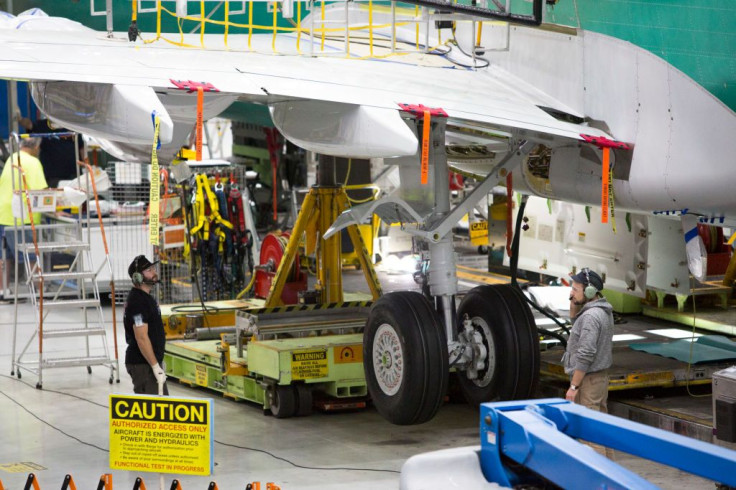Boeing 737 MAX Fix Released, Updates MCAS Software Suspected In Crashes

Boeing released a software fix to the MCAS, or Maneuvering Characteristics Augmentation System, which is suspected to have caused, or at least played a role in, the horrific crashes of two new 737 MAX 8 jetliners over the past five months.
MCAS is the prime suspect in the crash of an Indonesian Lion Air MAX 8 on Oct. 29, 2018, and a similar plane flown by Ethiopian Airlines that crashed March 10. Everyone on board the two planes -- 346 people, including passengers and crew -- were killed.
Aviation safety experts say MCAS automatically takes control of the plane, and pushes the nose lower, based on data from a single angle of attack (AoA) sensor.
MCAS is a new system installed on board all the 737 MAX planes, to compensate for a design issue that arose Boeing fitted them with newer and larger engines. The pilots on the Lion Air flight, however, didn’t know of the system because Boeing never told pilots about it till that plane crashed. The pilots on the Ethiopian Airlines flight were trained only briefly on MCAS. All four pilots had no classroom training or hands-on training with MCAS. The Lion Air crew clearly did not know what to do in case the system malfunctioned.
Boeing’s software fix announced Tuesday said it has fixed the MCAS. The update will ensure MCAS will now receive data from two AoA sensors, instead of just one. Boeing engineers said if both these AoA sensors disagree by more than 5.5 degrees, the MCAS system will be disabled and will not push the nose of the plane lower.
Boeing will also add an indicator to the flight control display so pilots are alerted when the Angle of Attack sensors disagree. It will also boost training required for all 737 pilots so they are more fully aware of how MCAS works and how to disable it if they encounter an issue.
“We’re working with pilots and industry officials,” said Mike Sinnett, Boeing vice president. “We have 200 of them today in our Renton facility and we’ll be spending time with them today to explain the updates we’re making to the 737 Max, to get their input and to earn their trust.”
Boeing plans to distribute the software updates by the end of this week. It also plans for enhanced pilot training for certification approval by the U.S. Federal Aviation Administration (FAA). The FAA’s approval process has come under a cloud after the MAX 8 disasters, and is being investigated by the Transportation Departmentthe. It is also the subject of a Senate hearing Wednesday afternoon.
Aviation industry officials believe it might take the FAA up to two weeks to certify the changes.
Boeing will send the software update to customers after the FAA approves the fix. The fix will take a few days to install but more time will be needed for training and testing.
The FAA and other regulators around the world will then need to approve the airworthiness and safety of the 737 MAX 8 before they approve flying the planes on commercial routes.
Some analysts believe it might take a minimum of six weeks and up to 12 weeks before the grounded jets take to the skies again. But there still remains the issue of pilot confidence in this sullied aircraft.
© Copyright IBTimes 2024. All rights reserved.





















